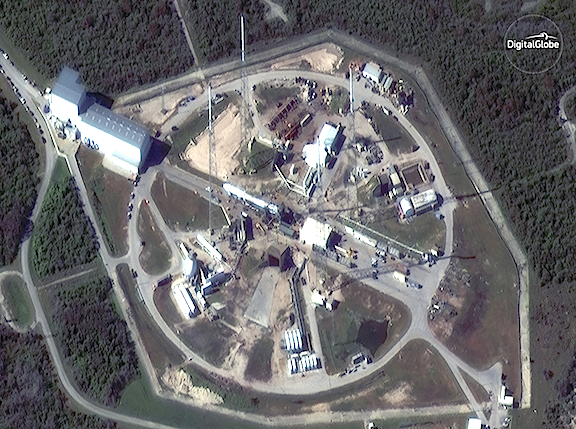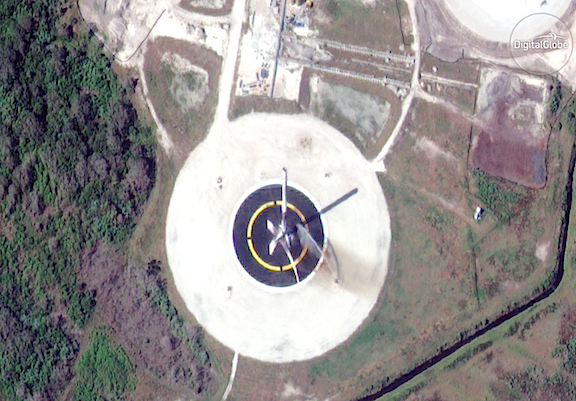
Falcon 9 rocket horizontal on the launch pad. GeoEye-1 was 800 km east of Cape Canaveral, tilted 49 degrees off-nadir, when it captured this image at 95 cm. By Matthew Flannery, DigitalGlobe

SpaceX enjoyed a successful launch last week, as well as several 'firsts' that were documented by DigitalGlobe’s GeoEye-1 satellite, and was referenced in a hopeful prelaunch article at Satnews.com found here and quoted below.

"SpaceX will attempt to land the first stage of Falcon 9 on the LZ-1 landing site located at Cape Canaveral Air Force Station."
The attempt proved to be successful for the first stage of Falcon 9, as well as this mission marks the first time SpaceX has flown both a flight-proven Falcon 9 and a flight-proven Dragon spacecraft in the same mission.
Falcon 9’s first stage previously supported the CRS-11 mission in June 2017 and the Dragon spacecraft previously supported the CRS-6 mission in April 2015.

WorldView-4, captured these images at 10:49 a.m. EST, just minutes after the Falcon 9 first stage booster returned to Earth with a flawless landing. A launch crew can be seen hosing down the rocket. By Matthew Flannery, DigitalGlobe
DigitalGlobe’s newest satellite, WorldView-4, captured these images at 10:49 a.m. EST, just minutes after the Falcon 9 first stage booster returned to Earth with a flawless landing. A launch crew can be seen hosing down the rocket.
And the event did enjoy a success as DigitalGlobe’s GeoEye-1 satellite captured an image of the Falcon 9 rocket horizontal on the launch pad. GeoEye-1 was 800 km east of Cape Canaveral, tilted 49 degrees off-nadir, when it captured this image at 95 cm resolution.
Besides delivering supplies to the ISS SpaceX carried two experiments for science investigations in space that are:
- Total and Spectral Solar Irradiance Sensor, or TSIS-1(a NASA instrument)
- a fiber optic payload

